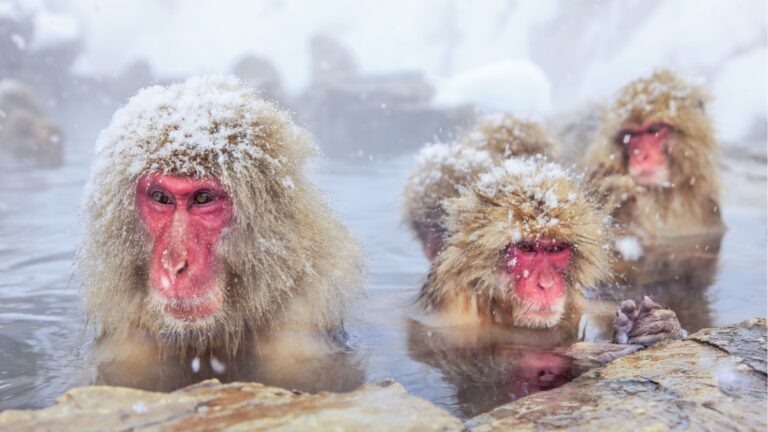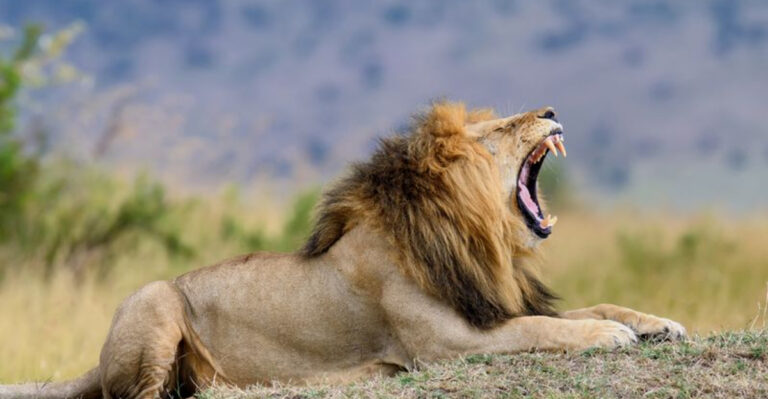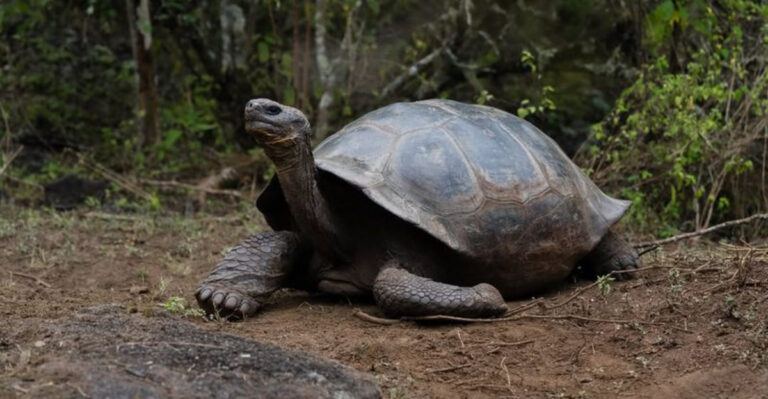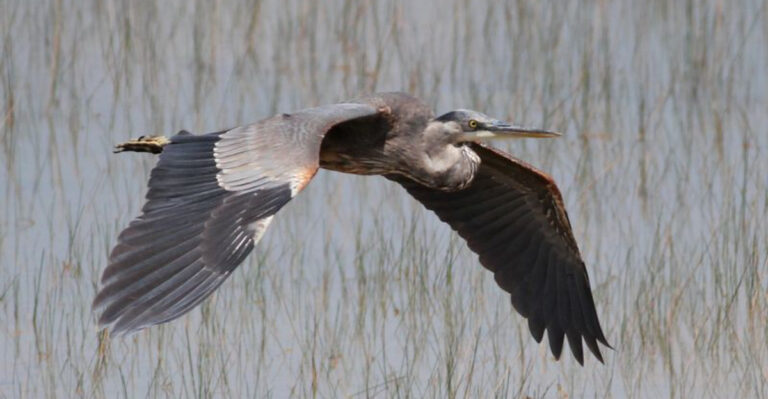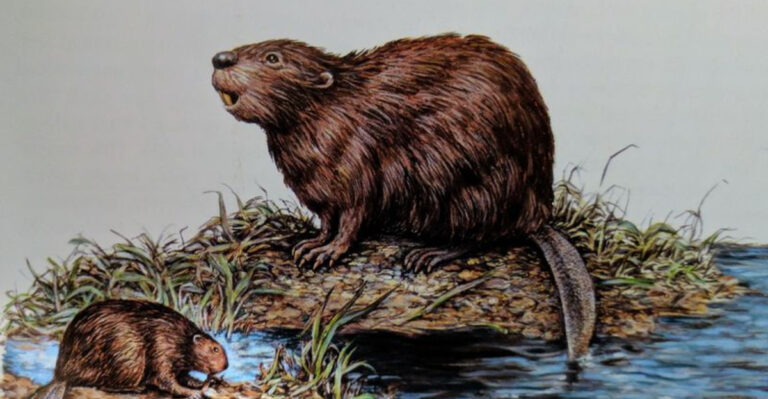13 Key Differences Between Axis Deer And White-Tailed Deer
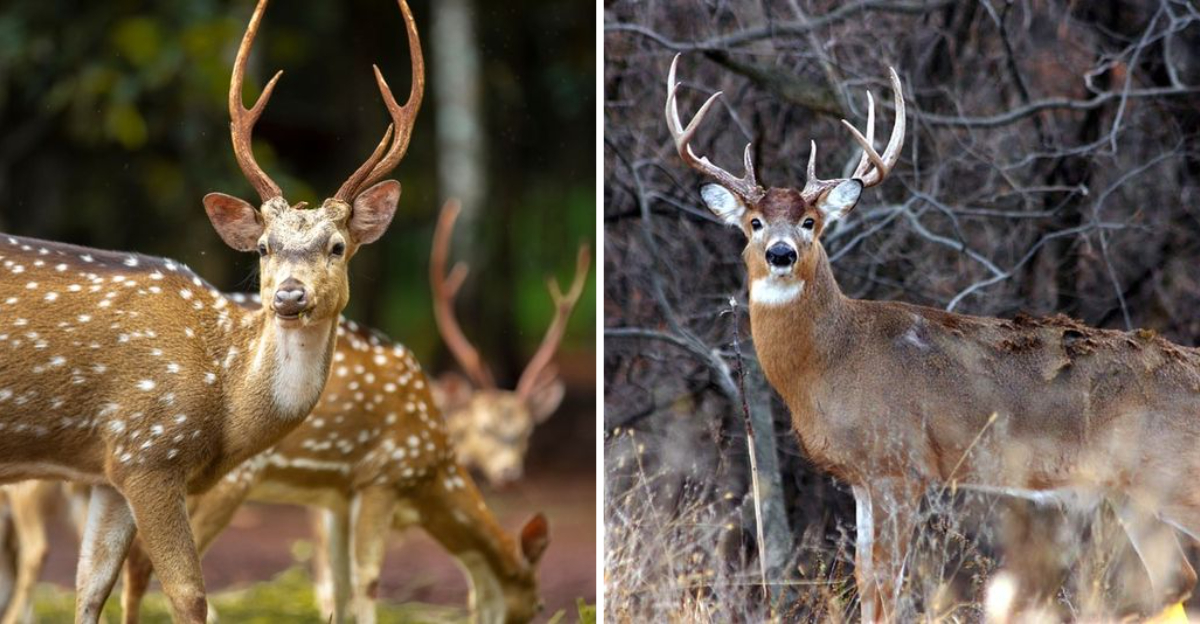
Ever spotted a deer in the wild and wondered what kind it was? Axis deer and white-tailed deer might look similar at first glance, but they’re actually quite different creatures with unique characteristics.
Whether you’re a wildlife enthusiast, hunter, or just curious about nature, understanding these differences can enhance your outdoor experiences and wildlife knowledge.
Let’s explore what makes each of these beautiful deer species special!
1. Native Habitats Worlds Apart
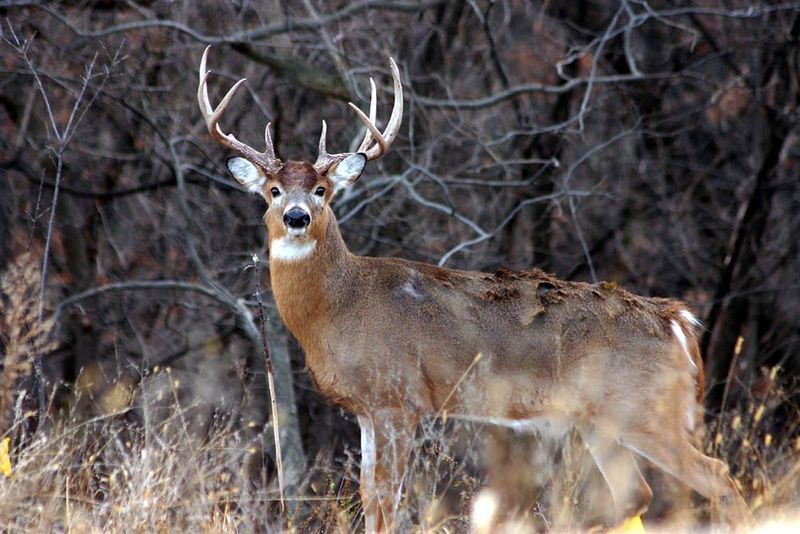
Axis deer originated in India, Nepal, and Sri Lanka, making them exotic visitors to North American ecosystems. They were introduced to Texas in the 1930s and have thrived in the warm climate.
White-tailed deer, on the other hand, are true North American natives. They roam from southern Canada all the way down to South America, adapting to diverse environments from forests to mountains and prairies.
This geographical distinction means axis deer haven’t evolved alongside the same predators and conditions as whitetails, resulting in different behaviors and survival strategies.
2. Coat Patterns Tell Different Stories

The axis deer sports a reddish-brown coat decorated with bright white spots that remain visible year-round. These permanent spots create a striking appearance that’s often compared to a cheetah’s markings.
White-tailed deer change their appearance with the seasons. In summer, they wear a reddish-brown coat, while winter brings a grayish-brown coloration. Their fawns have spots, but unlike axis deer, adult whitetails lose these markings as they mature.
These distinctive coat patterns serve different camouflage purposes in their respective native environments.
3. Antler Growth And Structure

Male axis deer grow impressive three-pronged antlers that typically reach 30-36 inches in length. Unlike most deer species, their antler growth doesn’t follow seasonal patterns – they can shed and regrow antlers at any time of year.
White-tailed bucks develop branching antlers with multiple points extending upward from a main beam. Their antler cycle is strictly seasonal, growing in spring and summer, then shedding after the winter breeding season.
The number of points on a whitetail’s antlers often increases with age, while axis deer maintain their signature three-point structure regardless of maturity.
4. Size And Weight Differences
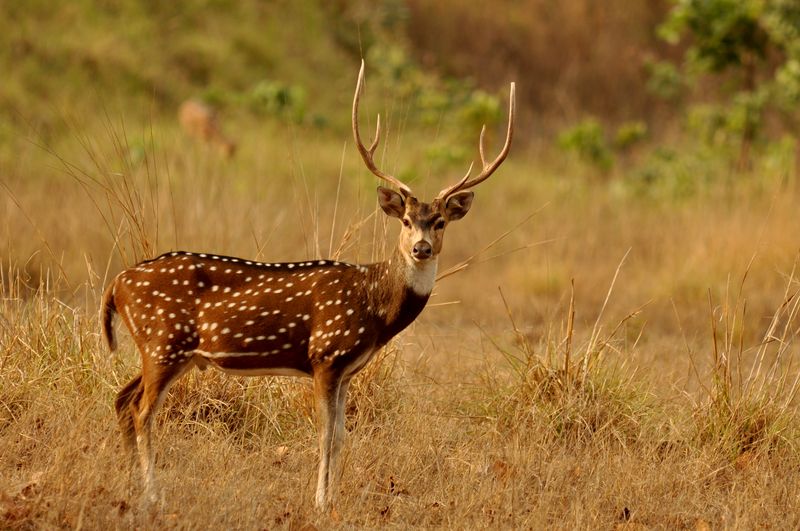
Axis deer maintain a more slender, elegant build compared to their North American cousins. Adult males typically weigh between 150-250 pounds and stand about 35-38 inches tall at the shoulder.
White-tailed deer show more regional size variation. Northern whitetails can reach 300 pounds, while southern subspecies might weigh just 125 pounds. They generally stand 36-40 inches at the shoulder.
Body proportions differ too – axis deer have longer legs relative to their body size, giving them a more graceful appearance when moving through their environment.
5. Distinctive Tail Behaviors

The white-tailed deer earned its name from its most famous feature – a bright white underside of the tail that flashes dramatically when the deer raises it in alarm. This warning signal is visible from great distances through dense forest.
Axis deer have a completely different tail display. Their tail is shorter with a dark stripe running down the top, and they don’t perform the same distinctive flag-raising behavior when startled.
Instead of flashing their tails, axis deer often emit a loud alarm bark to alert other deer to potential danger – a vocal rather than visual warning system.
6. Breeding Cycles And Seasons

White-tailed deer have a strict breeding season called the rut, which typically occurs in fall. This synchronized breeding ensures fawns are born in spring when food is abundant and weather is favorable.
Axis deer march to the beat of their own reproductive drum. They can breed year-round with no defined season, meaning fawns might be born during any month.
This difference reflects their tropical origins – in India’s consistent climate, axis deer never evolved the need for seasonal breeding that helps northern species survive harsh winters and food scarcity.
7. Vocal Communication Styles
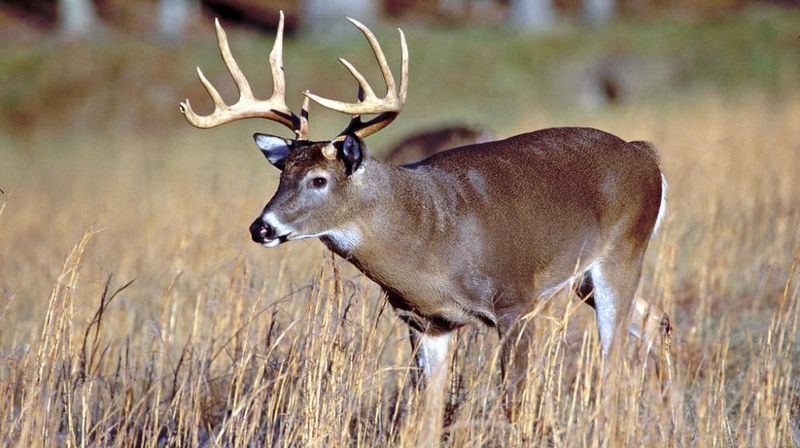
Listen carefully in deer country and you might hear the difference between these species. Axis deer are famous for their distinctive alarm call – a sharp, repeated barking sound that carries for long distances. They’re much more vocal than most deer species.
White-tailed deer communicate more subtly. They primarily use soft snorts, wheezes, and grunts during the breeding season, along with stomping their hooves as warning signals.
These communication differences reflect their evolutionary history – axis deer developed in open habitats where sound travels well, while whitetails rely more on visual signals in forested environments.
8. Social Structure And Herd Behavior
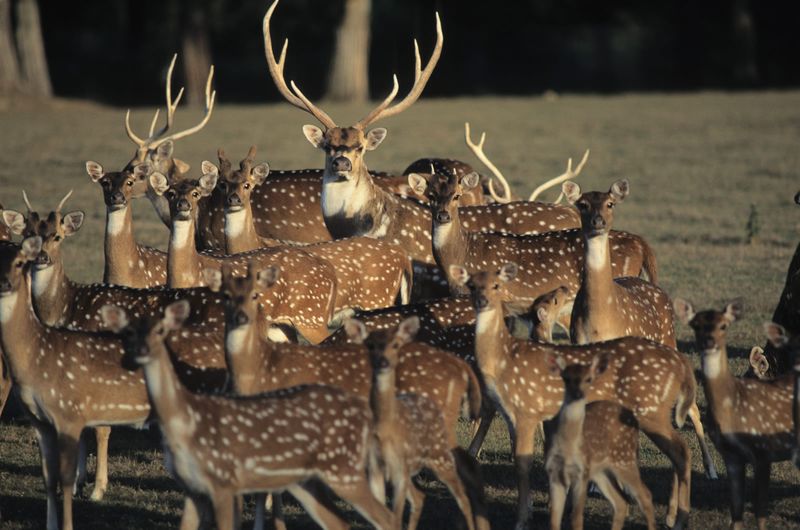
Axis deer maintain strong family groups year-round. Does, fawns, and young males form large herds of 15-20 animals, with mature males joining during breeding periods. Their social bonds remain consistent throughout the seasons.
White-tailed deer shift their social dynamics with the calendar. During spring and summer, does with fawns form small family groups while bucks live in bachelor herds.
Come fall, these patterns dissolve as the rut begins, with bucks becoming solitary and territorial. This flexible social structure helps whitetails adapt to changing food availability and breeding opportunities throughout the year.
9. Feeding Habits And Diet Preferences
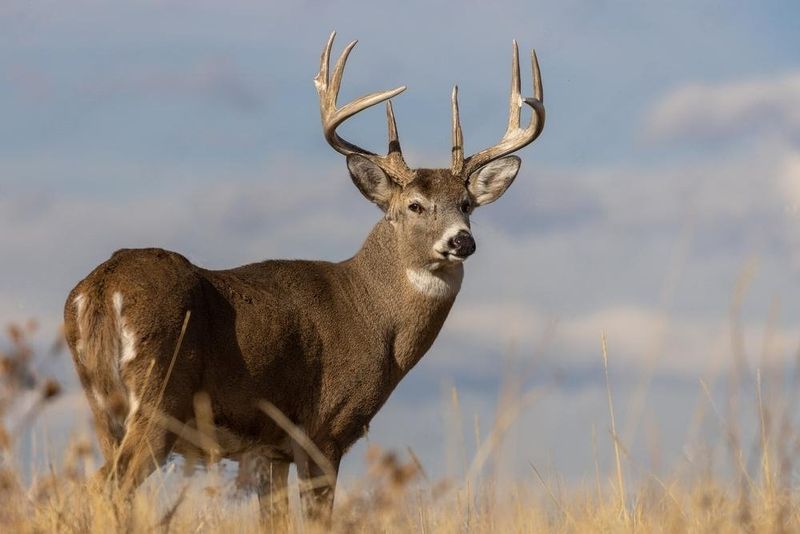
Axis deer primarily graze like cattle, preferring grasses and enjoying open meadows. Their diet consists of about 60% grass, supplemented with forbs, leaves, and occasional fruits or nuts.
White-tailed deer are browsers by nature. They selectively nibble tender shoots, buds, fruits, nuts, and fungi from a variety of plants, adaptable to whatever food sources are available seasonally.
These different feeding strategies mean the two species often don’t compete directly for food when sharing habitat. Their specialized digestive systems have evolved to process their preferred food sources most efficiently.
10. Lifespan And Aging Differences
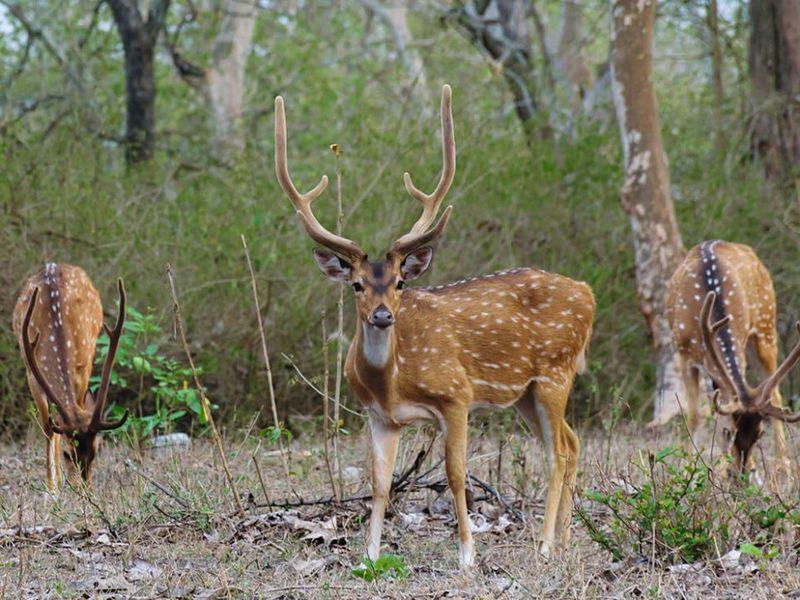
Axis deer enjoy relatively long lives in the wild, often reaching 12-15 years when conditions are favorable. Their consistent breeding cycle means population growth can be rapid in suitable habitats.
White-tailed deer typically live 6-8 years in the wild, though some may reach 10 years. Harsh winters, predation, and hunting pressure contribute to their shorter average lifespan.
Captive specimens of both species can live significantly longer – up to 20 years for axis and 18 for whitetails. The aging process also differs, with axis deer maintaining their physical condition longer into old age.
11. Reaction To Predators And Danger
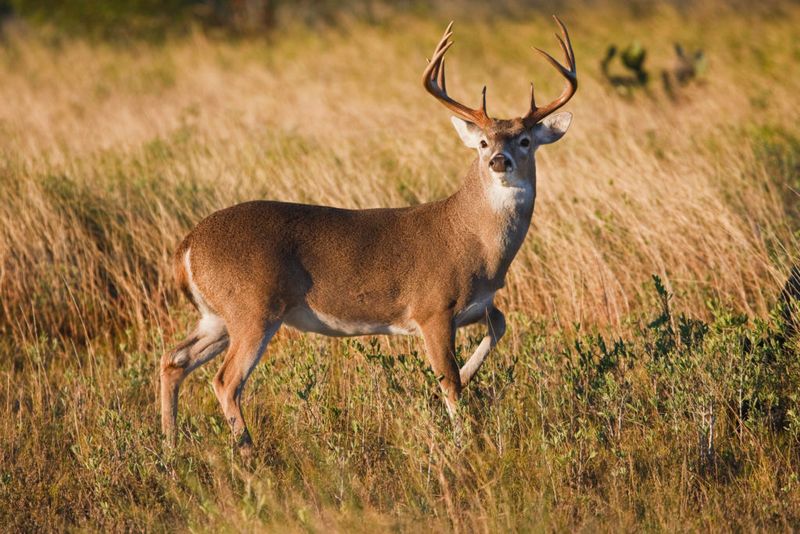
When threatened, white-tailed deer typically freeze first, then explode into action with impressive bursts of speed reaching 30 mph. They’re masters of the quick escape, zigzagging through forests to confuse predators.
Axis deer respond differently to danger. They often run in straight lines for longer distances, sometimes traveling over a mile before stopping. Their stamina exceeds their burst speed.
These contrasting escape strategies reflect their native habitats – whitetails evolved to navigate dense forests with quick direction changes, while axis deer developed endurance running in more open terrain.
12. Adaptability To Climate Extremes
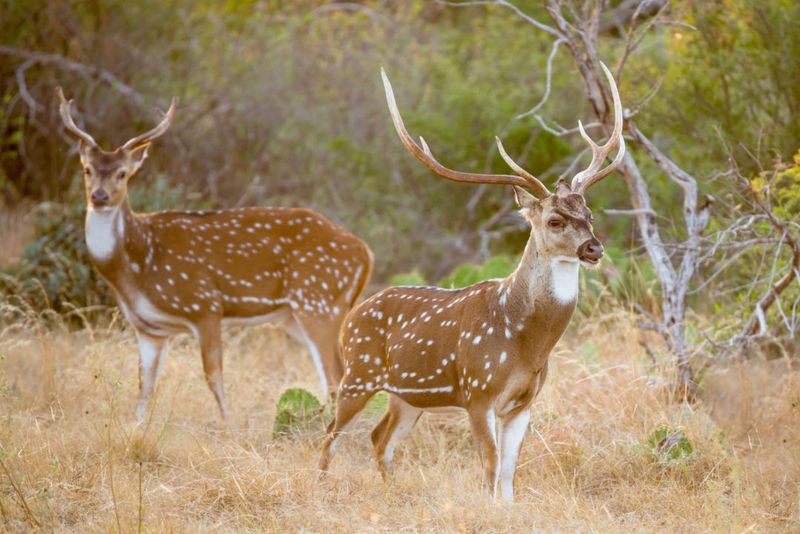
Coming from tropical India, axis deer thrive in warm, mild climates. They struggle in extreme cold and heavy snow, which limits their northern range in North America. Texas and Hawaii provide ideal conditions for these warmth-loving deer.
White-tailed deer demonstrate remarkable climate adaptability. Northern subspecies grow thick winter coats and can paw through snow for food, while southern populations tolerate intense heat and drought.
This climate flexibility explains why whitetails have one of the largest geographic ranges of any large mammal in the Western Hemisphere, spanning from Canada to Peru.
13. Impact On Local Ecosystems

As an introduced species in North America, axis deer can disrupt native ecosystems. They compete with native wildlife for resources and may damage vegetation patterns when their populations grow unchecked.
White-tailed deer, being native to North America, have co-evolved with local plants and predators. However, without natural predators in many regions, their populations can also reach problematic levels.
Conservation management approaches differ between the species – axis deer are often managed as exotic game animals, while whitetails are protected as native wildlife with carefully regulated hunting seasons.


